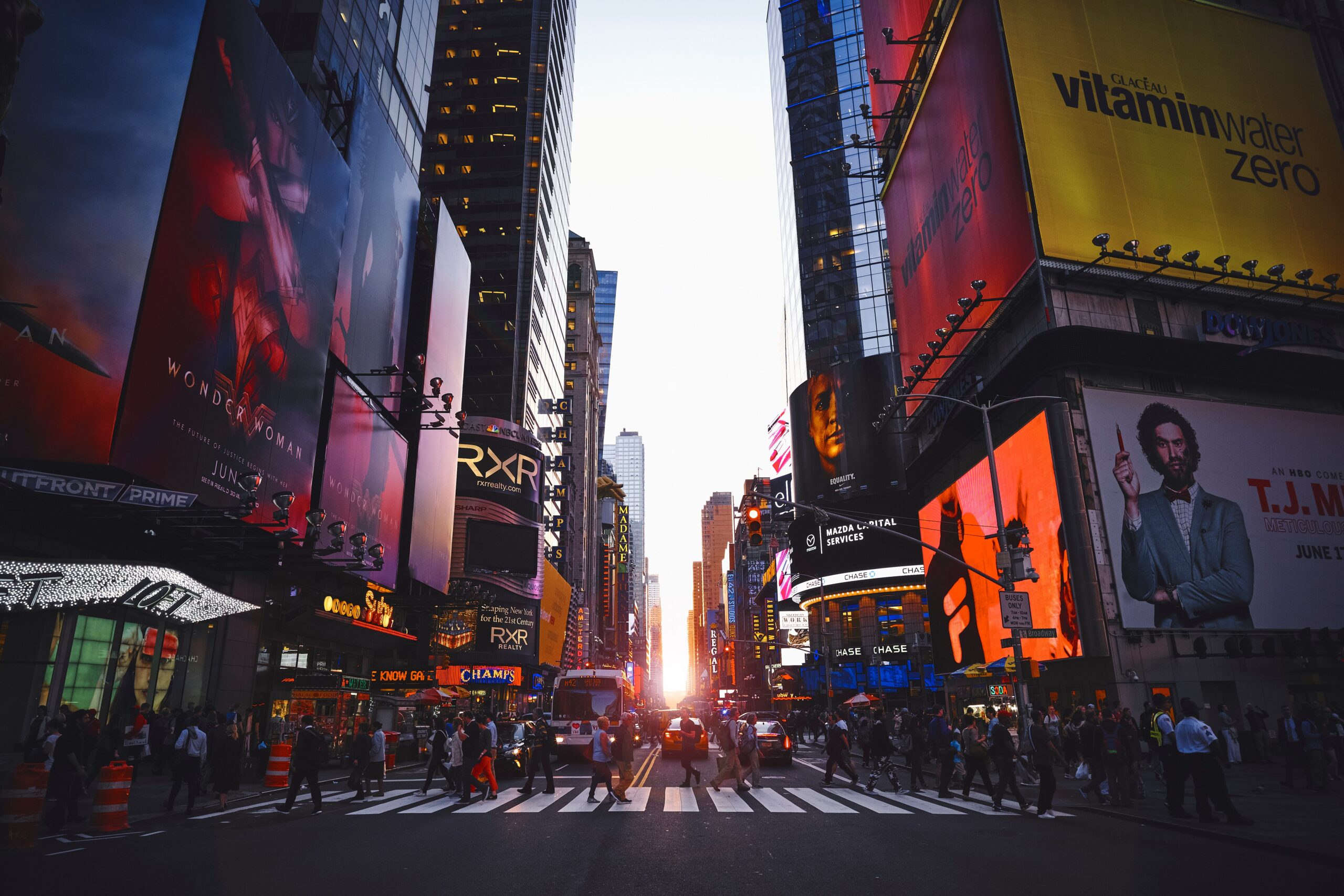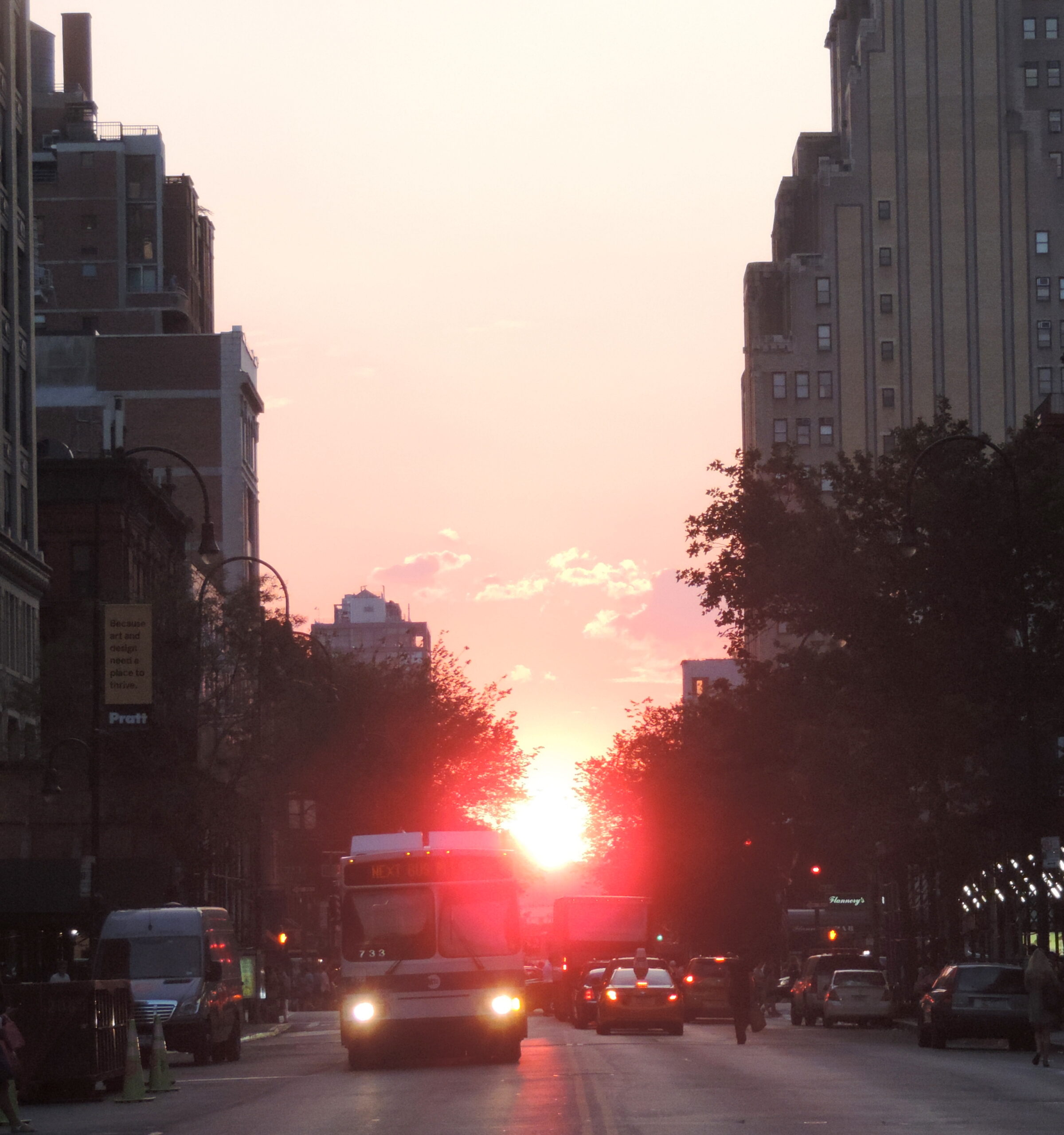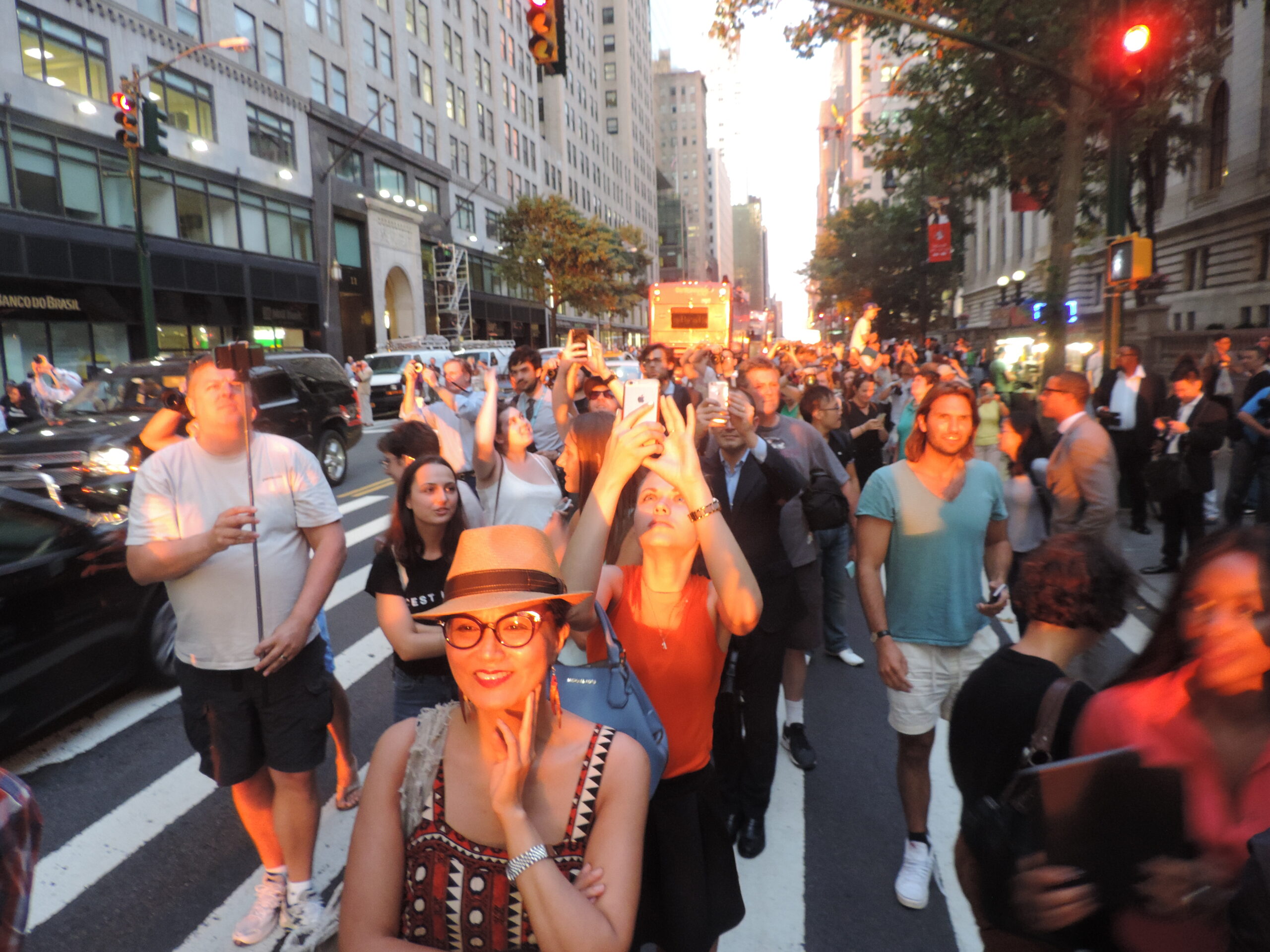Manhattanhenge, a term that evokes a sense of wonder and curiosity, is one of New York City’s most picturesque and awe-inspiring natural events. This phenomenon, occurring twice a year, bathes the city’s streets in a stunning glow, aligning perfectly with the east-west grid of Manhattan. But what exactly is Manhattanhenge, and why does it captivate the imaginations of New Yorkers and visitors from around the globe? In this exploration, we will delve into the science, history, and cultural significance of Manhattanhenge, shedding light on its enduring allure.
What Is the Phenomenon of Manhattanhenge?
Manhattanhenge is a cool event in New York City that happens twice every year. Imagine the sun setting down perfectly in line with the city’s big streets, lighting the buildings in a beautiful orange glow. It is when nature and the big city create a breathtaking view. Lots of people gather to watch and take photos of this awesome moment.
The name “Manhattanhenge” comes from Stonehenge, where the sun lines up with the stones during the solstices. Like Stonehenge, Manhattanhenge shows us how the sun and earth work together to create special moments, even in the middle of a bustling city like New York.
Historical Context and Urban Design
The phenomenon of Manhattanhenge is deeply intertwined with the historical development and urban design of New York City, offering a glimpse into the past and how it shapes our present experiences. The island of Manhattan, known for its distinctive skyline and bustling streets, owes much of its layout to decisions made over two centuries ago.
The Commissioners’ Plan of 1811 laid the groundwork for what would become one of the most iconic city grids in the world. This blueprint not only facilitated urban growth but also set the stage for the unique alignment of Manhattanhenge.
The Commissioners’ Plan of 1811
In the early 19th century, as New York City began to expand northward from the tip of Manhattan, there was a pressing need for a comprehensive urban plan to guide its development. The Commissioners’ Plan of 1811 was ambitious, envisioning a grid of streets and avenues covering the island, from Houston Street in the south to 155th Street in the north.
This grid was not just a matter of practical urban planning; it was a vision for the future, designed to impose order on the natural landscape and accommodate the city’s explosive growth. The plan proposed twelve north-south avenues parallel to the Hudson River and numbered streets running east-west.
This revolutionary grid system provided a simple yet effective framework for real estate development and infrastructure. However, the plan took little account of the island’s topography, leveling hills, and filling in valleys to create the uniform streetscape we see today.
The Impact on Manhattanhenge
The commissioners of the 1811 plan could not have anticipated how their grid would interact with the celestial movements to create Manhattanhenge. The grid’s orientation, slightly askew from true east-west due to the island’s geography, aligns almost perfectly with the sun’s azimuth during the Manhattanhenge events.
This alignment is a serendipitous result of the grid’s design, highlighting an unintended yet beautiful interaction between human intention and the natural world. The urban canyon effect, created by the towering skyscrapers lining the streets of Manhattan, further enhances the phenomenon. These buildings serve as the modern-day megaliths, framing the setting sun and creating a dramatic visual effect that draws thousands to the city’s thoroughfares twice a year.
This effect underscores the dynamic relationship between the city’s physical structure and the natural environment. This relationship continues to evolve as the skyline changes but remains anchored in the decisions made over two hundred years ago.
The Science Behind Manhattanhenge
The term “Manhattanhenge” was coined by Neil deGrasse Tyson, an astrophysicist and director of the Hayden Planetarium at the American Museum of Natural History. Drawing inspiration from Stonehenge, where the sun aligns with the stones on the solstices, Tyson recognized a modern marvel within the urban landscape of Manhattan.
Astronomical Precision
At its essence, Manhattanhenge is an event grounded in the precise movements of the celestial bodies, specifically the Earth and the Sun. The Earth orbits the sun in an elliptical path, and its axis is tilted at an angle of approximately 23.5 degrees relative to its orbit. This tilt and orbit give us seasons and variations in daylight throughout the year.
Twice a year, the setting sun aligns perfectly with the east-west streets of Manhattan’s grid. This alignment is not random but a result of the Earth’s tilt and its position in its orbit around the sun. During these occasions, the sunset’s position on the horizon matches exactly with the direction of the streets, allowing sunlight to flood the urban canyons made by Manhattan’s tall buildings.
The Impact of Manhattan’s Skyline
The towering skyscrapers of Manhattan play a crucial role in the visual impact of Manhattanhenge. These buildings create a dramatic silhouette against the setting sun, enhancing the beauty of the phenomenon. The skyscrapers also frame the sun, creating a natural photographic and visual spectacle that draws crowds and makes the event a significant cultural moment in the city.
The Role of Observer Location
The observer’s location within Manhattan also affects the experience of Manhattanhenge. While the phenomenon can be observed along many east-west streets, certain streets offer spectacular views due to their width and the buildings’ positioning. The phenomenon is best observed from locations that provide a clear, unobstructed view to the west, allowing observers to see the sun dip below the horizon between the buildings.
Experiencing Manhattanhenge
For those wishing to witness Manhattanhenge, timing and location are key. The best views are found on the wider crosstown streets, such as the 14th, 23rd, 34th, 42nd, and 57th streets. As the sun descends, the roads and buildings are cast in a golden hue, creating a photographer’s dream and a mesmerizing sight for spectators. Crowds gather, cameras in hand, to capture this fleeting moment where nature and city life align in perfect harmony.
Manhattanhenge not only offers a stunning visual spectacle but also provides a moment of communal experience. Strangers stand shoulder to shoulder, eyes turned westward, sharing in the wonder of the natural world intersecting with human achievement. It’s a reminder of the beauty that can emerge from the confluence of nature and the built environment.
The Cultural Significance of Manhattanhenge
Beyond its visual appeal, Manhattanhenge holds deeper cultural and philosophical significance. It is a modern-day ritual, a celestial celebration that marks the passage of time within city life’s constant hustle and bustle. In a metropolis that often feels disconnected from the natural world, Manhattanhenge reconnects urban dwellers with the cosmos, highlighting the broader universe’s influence on our daily lives.
This event also reflects humanity’s fascination with celestial alignment and its impact on culture and civilization. From ancient monuments like Stonehenge and the Pyramids of Giza to modern phenomena like Manhattanhenge, these alignments remind us of our quest to understand our place in the universe.
The Future of Manhattanhenge
As Manhattan continues to evolve, with new buildings rising and the cityscape changing, the future of Manhattanhenge may also shift. Urban development could alter the precise alignments or create new opportunities for similar phenomena in different parts of the city. However, the enduring appeal of Manhattanhenge lies not just in its visual spectacle but in its ability to bring people together, offering a pause for reflection and appreciation within the fast-paced rhythm of city life.
Conclusion
Manhattanhenge is a mesmerizing urban phenomenon encapsulating the extraordinary harmony between nature and the city’s grandeur. It is a testament to the serendipitous beauty that occurs when the setting sun aligns with Manhattan’s meticulously laid-out grid, illuminating the city in a breathtaking light display. This event not only offers a visual spectacle but also serves as a poignant reminder of our place within the larger cosmos, bridging the gap between the hustle of city life and the celestial movements above.
As such, Manhattanhenge continues to be a beloved and awe-inspiring tradition, drawing together diverse crowds in shared admiration and wonder and highlighting the unexpected moments of natural beauty that can emerge in the heart of an urban landscape.



